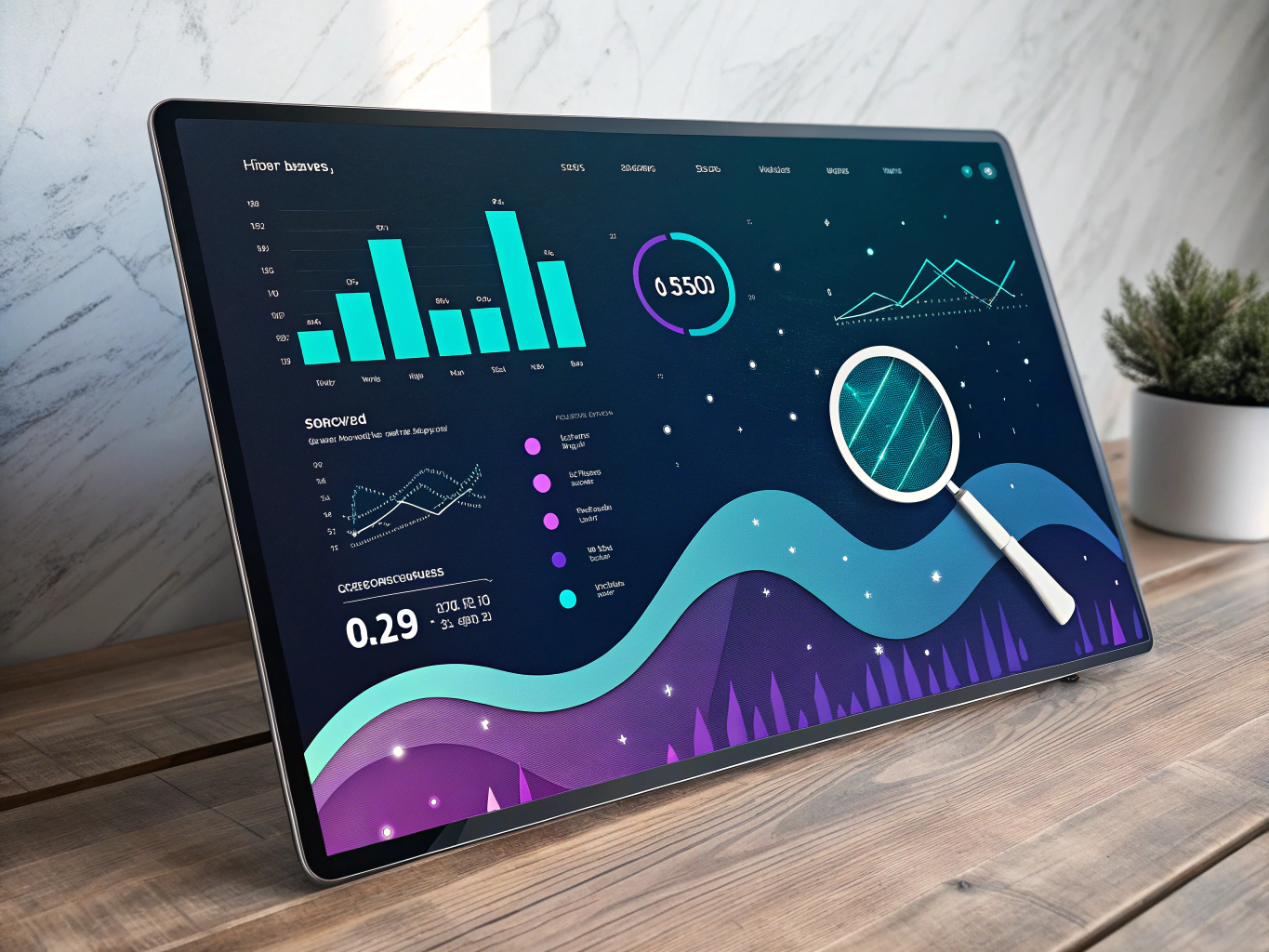Remember when keeping tabs on competitors meant scrolling through their social media and manually tracking their prices? Those days feel like ancient history now—kind of like trying to navigate with a paper map instead of GPS. The rise of competitive intelligence tools has transformed how we gather and analyze market data, but here’s the thing: most brands are still using these powerful tools like they’re glorified spreadsheets. For more insights, read our blog.

I’ve spent years helping ecommerce brands leverage AI and automation, and if there’s one thing I’ve learned, it’s that competitive intelligence isn’t just about collecting data—it’s about turning that data into actionable insights that actually move the needle. Discover how AI transforms Amazon listings.
Why Traditional Competitive Intelligence Tools Fall Short
Here’s a hard truth: most competitive intelligence tools are built for enterprise companies with massive budgets and dedicated analysis teams. They’re like giving a Formula 1 car to someone who just got their driver’s license—sure, it’s powerful, but can you actually use it effectively? Explore the best AI image tools that can enhance your strategies.
Tools like Jungle Scout and Crayon AI offer impressive features, but they often overwhelm users with data without providing clear direction on what to do with it. It’s like trying to drink from a fire hose—you’ll get water, but most of it will miss your mouth. Learn more about our comparison of Pebblely vs ProductScope. For more on competitive intelligence strategies, visit Gartner’s insights.
The Evolution of Market Intelligence Tools

The competitive intelligence landscape has shifted dramatically. We’ve moved from basic service providers offering static reports to sophisticated platforms using AI filters and bi-directional data flow. But here’s what’s interesting: the most effective tools aren’t necessarily the most complex ones. Check out our article on GPT-4o for more insights.
The Rise of AI-Powered Intelligence
Modern competitive intelligence solutions like Klue and Kompyte have introduced AI capabilities that can predict competitor moves before they happen. Think of it as having a crystal ball for your market—except this one actually works because it’s powered by data and machine learning, not mystical energy. For photography enthusiasts, explore AI photography vs traditional methods.
For your sales team, this means having battle cards that update themselves in real-time, pricing intelligence that adapts to market changes, and competitive analysis that goes beyond surface-level insights. It’s like having a team of analysts working 24/7, except they never ask for coffee breaks. Discover the best dropshipping apps for Shopify. To learn about leveraging AI in this field, read this Forbes article.
Why Traditional Competitive Intelligence Tools Fall Short
Look, I’ve spent countless hours diving into competitive intelligence tools, and here’s the thing – most of them feel like they’re stuck in 2015. They’re churning out data dumps that would make your head spin, but they’re missing the mark on what actually matters to modern businesses.
Traditional competitive intelligence tools are like that friend who tells you everything about everyone but misses the crucial details that actually matter. Sure, they’ll track your competitors’ every move, but they often fail to connect the dots in meaningful ways. Get tips on Amazon product title optimization.
The AI-Powered Revolution in Competitive Intelligence

This is where things get interesting. New-age tools like Crayon AI and Klue are fundamentally changing the game. Instead of just monitoring competitor websites (which, let’s be honest, any intern with a spreadsheet could do), they’re using AI to predict market shifts before they happen. Understand Instagram story background strategies.
The Rise of Bi-Directional Intelligence
Think of bi-directional competitive intelligence as your business’s radar system. It’s not just about collecting data – it’s about understanding the relationship between what your competitors are doing and how your market is responding. This is where service providers like Kompyte really shine, offering marketing intelligence tools that don’t just track – they interpret. Learn how to use Amazon Brand Analytics effectively.
Making Sense of the Noise
Here’s what your sales team actually needs: actionable insights, not more noise. The best competitive intelligence solution isn’t the one with the most data points – it’s the one that helps you make better decisions faster. Whether you’re using market intelligence tools for pricing strategies or tracking competitor movements, the key is filtering out the noise. Is Shopify legit? Find out here.
I’ve seen too many businesses get caught up in the “more data = better decisions” trap. But here’s the truth: without proper AI filters and intelligent analysis, you’re just drowning in information without gaining actual insights. The most effective competitor intelligence tools are the ones that help you see the forest AND the trees. Explore our guide on lifestyle images for ecommerce. For new rules in competitive intelligence, check this HBR article.
The Human Element in Competitive Intelligence
Let’s not forget – competitive intelligence software tools are meant to augment human intelligence, not replace it. The best competitive intelligence companies understand this, building platforms that enhance rather than automate decision-making processes. Learn about JPEG alternatives for better image quality.
Making Your Competitive Intelligence Tool Work Harder

Look, we’ve all been there – staring at dashboards full of competitor data wondering “what now?” The truth is, having a competitive intelligence tool isn’t enough. It’s like having a fancy sports car but never learning how to drive stick. You need to make that tool work for you, not the other way around.
Integration is Everything
Your competitive intelligence solution should play nice with others. Think about it – what good is competitor data if your sales team can’t access it during crucial calls? Tools like Klue and Crayon AI shine here, offering bi-directional integration with your existing tech stack. It’s not just about collecting data; it’s about getting it to the right people at the right time. Discover how to darken a photo effectively.
The Future of Competitive Intelligence Tools
Here’s where it gets interesting (and where my inner sci-fi geek comes out). The next generation of market intelligence tools won’t just track what your competitors are doing – they’ll predict what they’re going to do. We’re talking AI filters that can spot patterns humans might miss, and service providers that can generate strategic recommendations based on complex market dynamics.
Beyond Traditional Monitoring
The days of simple website monitoring are behind us. Modern competitive intelligence companies are building tools that can analyze everything from social sentiment to supply chain disruptions. Jungle Scout pioneered this in the Amazon space, but we’re seeing similar innovations across all market intelligence tools.
And here’s the kicker – the best competitive intelligence software tools aren’t just about watching your competitors. They’re about understanding your entire market ecosystem. That includes customers, suppliers, regulatory changes, and emerging technologies that could disrupt your industry overnight. For diverse visual needs, explore background design options.
The Bottom Line
At the end of the day, your competitive intelligence tool is only as good as how you use it. Start small, focus on actionable insights, and gradually expand your monitoring scope as you get comfortable with the platform. Remember: the goal isn’t to drown in data – it’s to surface the insights that will actually move the needle for your business.
And please, whatever you do, don’t just set it and forget it. The most successful companies I’ve worked with treat their competitive intelligence tools like living organisms – constantly feeding them new information, refining their parameters, and evolving their usage as their business needs change. For comprehensive toolkits, explore our range of tools.
👉👉 Create Photos, Videos & Optimized Content in minutes 👈👈
Related Articles:
- Insights, Tips, and Tools for Growth – ProductScope Blog
- Best AI Image Tools Every E-commerce Business Should Know
- How AI Transforms Amazon Listings into Irresistible Buyer Magnets
Frequently Asked Questions
bi directional
Bi-directional competitive intelligence refers to the process of gathering and analyzing competitive data from both internal and external sources. This approach helps organizations obtain a well-rounded view of the market landscape, as they can leverage internal insights alongside external market data to inform strategic decisions.
competitive intelligence companies
Competitive intelligence companies specialize in collecting and analyzing data about competitors and the overall market environment. These firms provide insights that help businesses make informed strategic decisions, maintain a competitive edge, and identify potential opportunities or threats within their industry.
ai filterswhich tool can be used to gather competitive intelligence from web sites
Tools like SEMrush, SimilarWeb, and Ahrefs are commonly used to gather competitive intelligence from websites. These platforms use AI algorithms to analyze web traffic, keyword performance, backlink data, and other metrics, giving businesses valuable insights into their competitors’ online strategies and market position.
what tool allows you to search external competitive intelligence research
Tools such as Crayon and Digimind allow users to search for external competitive intelligence research. These platforms aggregate data from various sources, enabling businesses to stay informed about industry trends, competitor activities, and market dynamics through a comprehensive searchable database.
what tool allows you to search external competitive intelligence research (e.g. idc, gartner)
Platforms like Statista and Forrester provide access to external competitive intelligence research, including reports from renowned analyst firms like IDC and Gartner. These tools offer extensive databases of market reports, industry analyses, and expert assessments, allowing businesses to gain detailed insights into competitive landscapes and technology trends.
About the Author
Vijay Jacob is the founder and chief contributing writer for ProductScope AI focused on storytelling in AI and tech. You can follow him on X and LinkedIn, and ProductScope AI on X and on LinkedIn.
We’re also building a powerful AI Studio for Brands & Creators to sell smarter and faster with AI. With PS Studio you can generate AI Images, AI Videos, Chat and Automate repeat writing with AI Agents that can produce content in your voice and tone all in one place. If you sell on Amazon you can even optimize your Amazon Product Listings or get unique customer insights with PS Optimize.
🎁 Limited time Bonus: I put together an exclusive welcome gift called the “Formula,” which includes all of my free checklists (from SEO to Image Design to content creation at scale), including the top AI agents, and ways to scale your brand & content strategy today. Sign up free to get 200 PS Studio credits on us, and as a bonus, you will receive the “formula” via email as a thank you for your time.
